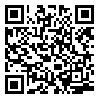Volume 16, Issue 4 (9 2004)
jdm 2004, 16(4): 25-30 |
Back to browse issues page
Download citation:
BibTeX | RIS | EndNote | Medlars | ProCite | Reference Manager | RefWorks
Send citation to:



BibTeX | RIS | EndNote | Medlars | ProCite | Reference Manager | RefWorks
Send citation to:
Shirani G, Kazemi D. An investigation on the incidence of neurosensory disturbances of inferior alveolar nerve and condylardisplacement with Choung (IVSRO) osteotomy. jdm 2004; 16 (4) :25-30
URL: http://jdm.tums.ac.ir/article-1-390-en.html
URL: http://jdm.tums.ac.ir/article-1-390-en.html
Abstract: (5330 Views)
Statement of Problem:The choung osteotomy (Intraoral Vertico- Sagittal Ramus Osteotomy) has developed since 1992 in the treatment of mandibular prognathism. In IVSRO, osteotomy plane is theoretically parallel to the original sagittal plane and thereby attempting to decrease the incidence of condylar dispacement. This osteotomy designed additionally to decrease neurosensory disturbances.
Purpose: The aim of this study was to evaluate the incidence of neurosensory deficit and condylar displacement with IVSRO and Sagittal Split Ramus Osteotomy (SSRO).
Materials and Methods: In this study, mandibular set back surgery was accomplished upon 7 patients by choung osteotomy. In addition to choung osteotomy, in 2 patients Lefort 1 osteomy was performed for maxillary protrusion and for 2 other patients, chain surgery was performed. Variables such as the neurosensory disturbances of inferior alveolar nerve and condylar displacement following choung osteotomy were investigated. All the patients were followed up one year after osteotomy. OPG, Lateral Cephalogram and Submentovertex radiographies were take pre and postoperatively for all patients.
Results: No statistically significant differences were found in condylar displacement (P>0.5). However, Mc Nemar analysis showed significant difference of neurosensory deficit between IVSRO and SSRO (P=0.001).
Conclusion: It is suggested that choung osteotomy is a safe procedure for mandibular surgery.
Purpose: The aim of this study was to evaluate the incidence of neurosensory deficit and condylar displacement with IVSRO and Sagittal Split Ramus Osteotomy (SSRO).
Materials and Methods: In this study, mandibular set back surgery was accomplished upon 7 patients by choung osteotomy. In addition to choung osteotomy, in 2 patients Lefort 1 osteomy was performed for maxillary protrusion and for 2 other patients, chain surgery was performed. Variables such as the neurosensory disturbances of inferior alveolar nerve and condylar displacement following choung osteotomy were investigated. All the patients were followed up one year after osteotomy. OPG, Lateral Cephalogram and Submentovertex radiographies were take pre and postoperatively for all patients.
Results: No statistically significant differences were found in condylar displacement (P>0.5). However, Mc Nemar analysis showed significant difference of neurosensory deficit between IVSRO and SSRO (P=0.001).
Conclusion: It is suggested that choung osteotomy is a safe procedure for mandibular surgery.
Keywords: Intraoral Vertico, Sagittal ramus Osteotomy, Condylar displacement, Neurosensory disturbances, Mandibular prognathism
| Rights and Permissions | |
 |
This work is licensed under a Creative Commons Attribution-NonCommercial 4.0 International License. |




